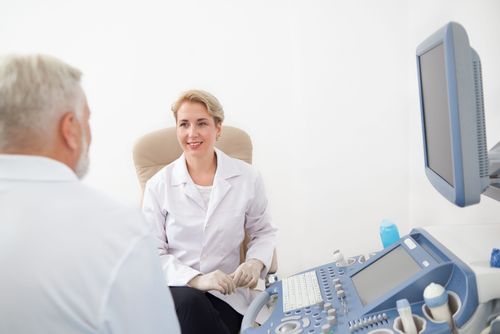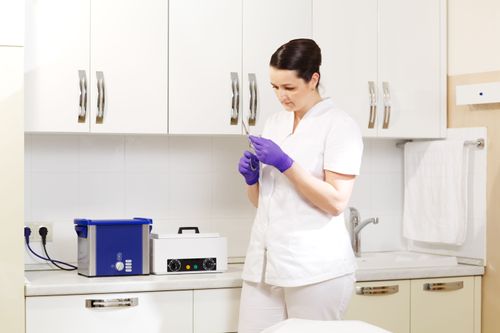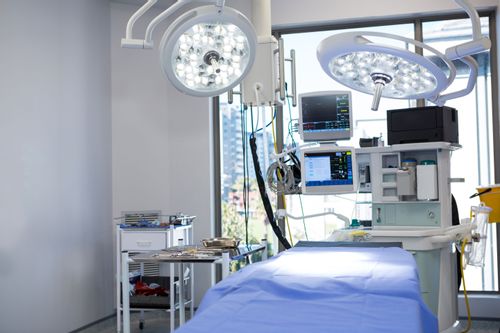SIST EN ISO 11607-2:2020
(Main)Packaging for terminally sterilized medical devices - Part 2: Validation requirements for forming, sealing and assembly processes (ISO 11607-2:2019)
Packaging for terminally sterilized medical devices - Part 2: Validation requirements for forming, sealing and assembly processes (ISO 11607-2:2019)
This document specifies requirements for the development and validation of processes for packaging medical devices that are terminally sterilized. These processes include forming, sealing and assembly of preformed sterile barrier systems, sterile barrier systems and packaging systems.
It is applicable to industry, to health care facilities, and to wherever medical devices are packaged and sterilized.
It does not cover all requirements for packaging medical devices that are manufactured aseptically. Additional requirements can be necessary for drug/device combinations.
Verpackungen für in der Endverpackung zu sterilisierende Medizinprodukte - Teil 2: Validierungsanforderungen an Prozesse der Formgebung, Siegelung und des Zusammenstellens (ISO 11607-2:2019)
Dieses Dokument legt Anforderungen für die Entwicklung und Validierung von Verpackungsprozessen für Medizinprodukte fest, die in der Endverpackung sterilisiert werden. Zu diesen Verfahren gehören die Formung, Siegelung und das Zusammenstellen von vorgefertigten Sterilbarrieresystemen, Steril-barrieresystemen und Verpackungssystemen.
Es gilt für die Industrie, für Einrichtungen des Gesundheitswesens und für alle anderen Einrichtungen, in denen Medizinprodukte verpackt und sterilisiert werden.
Es deckt nicht alle Anforderungen an Verpackungen aseptisch hergestellter Medizinprodukte ab. Für Kombinationen von Medikamenten und Medizinprodukten können zusätzliche Anforderungen erforderlich sein.
Emballages des dispositifs médicaux stérilisés au stade terminal - Partie 2: Exigences de validation pour les procédés de formage, scellage et assemblage (ISO 11607-2:2019)
Le présent document spécifie les exigences pour la mise au point et la validation des procédés d'emballage de dispositifs médicaux qui sont stérilisés au stade terminal. Ces procédés comprennent le formage, le scellage et l'assemblage de systèmes de barrière stérile préformés, de systèmes de barrière stérile et de systèmes d'emballage.
Il s'applique à l'industrie, aux établissements de santé et à tout lieu où les dispositifs médicaux sont emballés et stérilisés.
Il ne couvre pas toutes les exigences relatives à l'emballage des dispositifs médicaux fabriqués de manière aseptique. Des exigences supplémentaires peuvent être nécessaires pour garantir les combinaisons médicaments/dispositifs.
Embalaža za končno sterilizirane medicinske pripomočke - 2. del: Zahteve za validacijo pri procesih oblikovanja, označevanja in sestavljanja (ISO 11607-2:2019)
Ta dokument podaja zahteve za razvoj in validacijo procesov za embalažo medicinskih pripomočkov, ki so končno sterilizirani. Ti procesi vključujejo oblikovanje, označevanje in sestavljanje izvedenih sterilnih pregradnih sistemov, sterilnih pregradnih sistemov in sistemov embalaže. Uporablja se za industrijo, zdravstvene ustanove in vse medicinske pripomočke, ki so dani v embalažo in sterilizirani. Ne zajema vseh zahtev za embalažo medicinskih pripomočkov, ki so izdelani aseptično. Za kombinacije zdravil/pripomočkov so morda potrebne dodatne zahteve
General Information
Relations
Standards Content (Sample)
SLOVENSKI STANDARD
01-marec-2020
Nadomešča:
SIST EN ISO 11607-2:2017
Embalaža za končno sterilizirane medicinske pripomočke - 2. del: Zahteve za
validacijo pri procesih oblikovanja, označevanja in sestavljanja (ISO 11607-2:2019)
Packaging for terminally sterilized medical devices - Part 2: Validation requirements for
forming, sealing and assembly processes (ISO 11607-2:2019)
Verpackungen für in der Endverpackung zu sterilisierende Medizinprodukte - Teil 2:
Validierungsanforderungen an Prozesse der Formgebung, Siegelung und des
Zusammenstellens (ISO 11607-2:2019)
Emballages des dispositifs médicaux stérilisés au stade terminal - Partie 2: Exigences de
validation pour les procédés de formage, scellage et assemblage (ISO 11607-2:2019)
Ta slovenski standard je istoveten z: EN ISO 11607-2:2020
ICS:
11.080.30 Sterilizirana embalaža Sterilized packaging
2003-01.Slovenski inštitut za standardizacijo. Razmnoževanje celote ali delov tega standarda ni dovoljeno.
EN ISO 11607-2
EUROPEAN STANDARD
NORME EUROPÉENNE
January 2020
EUROPÄISCHE NORM
ICS 11.080.30 Supersedes EN ISO 11607-2:2017
English Version
Packaging for terminally sterilized medical devices - Part
2: Validation requirements for forming, sealing and
assembly processes (ISO 11607-2:2019)
Emballages des dispositifs médicaux stérilisés au stade Verpackungen für in der Endverpackung zu
terminal - Partie 2: Exigences de validation pour les sterilisierende Medizinprodukte - Teil 2:
procédés de formage, scellage et assemblage (ISO Validierungsanforderungen an Prozesse der
11607-2:2019) Formgebung, Siegelung und des Zusammenstellens
(ISO 11607-2:2019)
This European Standard was approved by CEN on 4 December 2019.
CEN members are bound to comply with the CEN/CENELEC Internal Regulations which stipulate the conditions for giving this
European Standard the status of a national standard without any alteration. Up-to-date lists and bibliographical references
concerning such national standards may be obtained on application to the CEN-CENELEC Management Centre or to any CEN
member.
This European Standard exists in three official versions (English, French, German). A version in any other language made by
translation under the responsibility of a CEN member into its own language and notified to the CEN-CENELEC Management
Centre has the same status as the official versions.
CEN members are the national standards bodies of Austria, Belgium, Bulgaria, Croatia, Cyprus, Czech Republic, Denmark, Estonia,
Finland, France, Germany, Greece, Hungary, Iceland, Ireland, Italy, Latvia, Lithuania, Luxembourg, Malta, Netherlands, Norway,
Poland, Portugal, Republic of North Macedonia, Romania, Serbia, Slovakia, Slovenia, Spain, Sweden, Switzerland, Turkey and
United Kingdom.
EUROPEAN COMMITTEE FOR STANDARDIZATION
COMITÉ EUROPÉEN DE NORMALISATION
EUROPÄISCHES KOMITEE FÜR NORMUNG
CEN-CENELEC Management Centre: Rue de la Science 23, B-1040 Brussels
© 2020 CEN All rights of exploitation in any form and by any means reserved Ref. No. EN ISO 11607-2:2020 E
worldwide for CEN national Members.
Contents Page
European foreword . 3
European foreword
This document (EN ISO 11607-2:2020) has been prepared by Technical Committee ISO/TC 198
"Sterilization of health care products" in collaboration with Technical Committee CEN/TC 102
“Sterilizers and associated equipment for processing of medical devices” the secretariat of which is held
by DIN.
This European Standard shall be given the status of a national standard, either by publication of an
identical text or by endorsement, at the latest by July 2020, and conflicting national standards shall be
withdrawn at the latest by July 2020.
Attention is drawn to the possibility that some of the elements of this document may be the subject of
patent rights. CEN shall not be held responsible for identifying any or all such patent rights.
This document supersedes EN ISO 11607-2:2017.
This document has been prepared under a mandate given to CEN by the European Commission and the
European Free Trade Association.
According to the CEN-CENELEC Internal Regulations, the national standards organizations of the
following countries are bound to implement this European Standard: Austria, Belgium, Bulgaria,
Croatia, Cyprus, Czech Republic, Denmark, Estonia, Finland, France, Germany, Greece, Hungary, Iceland,
Ireland, Italy, Latvia, Lithuania, Luxembourg, Malta, Netherlands, Norway, Poland, Portugal, Republic of
North Macedonia, Romania, Serbia, Slovakia, Slovenia, Spain, Sweden, Switzerland, Turkey and the
United Kingdom.
Endorsement notice
The text of ISO 11607-2:2019 has been approved by CEN as EN ISO 11607-2:2020 without any
modification.
INTERNATIONAL ISO
STANDARD 11607-2
Second edition
2019-02
Packaging for terminally sterilized
medical devices —
Part 2:
Validation requirements for forming,
sealing and assembly processes
Emballages des dispositifs médicaux stérilisés au stade terminal —
Partie 2: Exigences de validation pour les procédés de formage,
scellage et assemblage
Reference number
ISO 11607-2:2019(E)
©
ISO 2019
ISO 11607-2:2019(E)
© ISO 2019
All rights reserved. Unless otherwise specified, or required in the context of its implementation, no part of this publication may
be reproduced or utilized otherwise in any form or by any means, electronic or mechanical, including photocopying, or posting
on the internet or an intranet, without prior written permission. Permission can be requested from either ISO at the address
below or ISO’s member body in the country of the requester.
ISO copyright office
CP 401 • Ch. de Blandonnet 8
CH-1214 Vernier, Geneva
Phone: +41 22 749 01 11
Fax: +41 22 749 09 47
Email: copyright@iso.org
Website: www.iso.org
Published in Switzerland
ii © ISO 2019 – All rights reserved
ISO 11607-2:2019(E)
Contents Page
Foreword .iv
Introduction .v
1 Scope . 1
2 Normative references . 1
3 Terms and definitions . 1
4 General requirements . 5
4.1 Quality systems . 5
4.2 Risk management . 6
4.3 Sampling . 6
4.4 Test methods . 6
4.5 Documentation . 6
5 Validation of packaging processes . 7
5.1 General . 7
5.2 Installation qualification . 7
5.3 Operational qualification . 8
5.4 Performance qualification . 9
5.5 Formal approval of the process validation. 9
5.6 Process control and monitoring .10
5.7 Process changes and revalidation .10
6 Assembly .10
7 Use of reusable sterile barrier systems .11
8 Sterile fluid-path packaging .11
Annex A (informative) Process development .12
Bibliography .13
ISO 11607-2:2019(E)
Foreword
ISO (the International Organization for Standardization) is a worldwide federation of national standards
bodies (ISO member bodies). The work of preparing International Standards is normally carried out
through ISO technical committees. Each member body interested in a subject for which a technical
committee has been established has the right to be represented on that committee. International
organizations, governmental and non-governmental, in liaison with ISO, also take part in the work.
ISO collaborates closely with the International Electrotechnical Commission (IEC) on all matters of
electrotechnical standardization.
The procedures used to develop this document and those intended for its further maintenance are
described in the ISO/IEC Directives, Part 1. In particular, the different approval criteria needed for the
different types of ISO documents should be noted. This document was drafted in accordance with the
editorial rules of the ISO/IEC Directives, Part 2 (see www .iso .org/directives).
Attention is drawn to the possibility that some of the elements of this document may be the subject of
patent rights. ISO shall not be held responsible for identifying any or all such patent rights. Details of
any patent rights identified during the development of the document will be in the Introduction and/or
on the ISO list of patent declarations received (see www .iso .org/patents).
Any trade name used in this document is information given for the convenience of users and does not
constitute an endorsement.
For an explanation of the voluntary nature of standards, the meaning of ISO specific terms and
expressions related to conformity assessment, as well as information about ISO's adherence to the
World Trade Organization (WTO) principles in the Technical Barriers to Trade (TBT) see the following
URL: www .iso .org/iso/foreword .html.
This document was prepared by Technical Committee ISO/TC 198, Sterilization of health care products.
This second edition cancels and replaces the first edition (ISO 11607-2:2006), which has been technically
revised. It also incorporates the amendment ISO 11607-2:2006/Amd.1:2014.
The main changes compared to the previous edition are as follows:
— terms and definitions for “process variable”, “process parameter” and “monitoring of processes”
have been added;
— various definitions have been aligned with the latest version of ISO 11139;
— the terminology of “critical” process parameters has been discontinued and the concept of a process
specification has been introduced to include all elements required to manufacture a product that
consistently meets specifications.
A list of all parts in the ISO 11607 series can be found on the ISO website.
Any feedback or questions on this document should be directed to the user’s national standards body. A
complete listing of these bodies can be found at www .iso .org/members .html.
iv © ISO 2019 – All rights reserved
ISO 11607-2:2019(E)
Introduction
Packaging for terminally sterilized medical devices should be designed and manufactured to ensure
that the medical device can be sterilized and remain sterile under documented storage and transport
conditions until the sterile barrier system is damaged or opened.
One of the most critical characteristics of a sterile barrier system and packaging system for sterile
medical devices is the assurance of sterility maintenance. Medical devices delivered in a sterile
state should have been manufactured, packed and sterilized by appropriate, validated methods. The
development and validation of packaging processes are crucial to ensure that sterile barrier system
integrity is attained and will remain so until opened by the users of sterile medical devices.
There should be a documented process validation programme demonstrating the efficacy and
reproducibility of all packaging and sterilization processes. Along with the sterilization process, some
of the packaging operations that can affect sterile barrier system integrity are sealing, capping or other
closure systems, cutting, form/fill/seal, assembly processes and subsequent handling. This document
provides the framework of activities and requirements to develop and validate the process used to
make and assemble the packaging system. Guidance for ISO 11607 series can be found in ISO/TS 16775.
The term “sterile barrier system” was introduced in 2006 to describe the minimum packaging required
to perform the unique functions required of medical packaging: to allow sterilization, to provide an
acceptable microbial barrier, and to allow for aseptic presentation. “Protective packaging” protects
the sterile barrier system, and together they form the packaging system. “Preformed sterile barrier
systems” would include any partially assembled sterile barrier systems such as pouches, header bags
or hospital packaging reels.
The sterile barrier system is essential to ensure the safety of terminally sterilized medical devices.
Regulatory authorities recognize the critical nature of sterile barrier systems by considering them as
an accessory or a component of a medical device. Preformed sterile barrier systems sold to health care
facilities for use in internal sterilization are considered medical devices in many parts of the world.
INTERNATIONAL STANDARD ISO 11607-2:2019(E)
Packaging for terminally sterilized medical devices —
Part 2:
Validation requirements for forming, sealing and assembly
processes
1 Scope
This document specifies requirements for the development and validation of processes for packaging
medical devices that are terminally sterilized. These processes include forming, sealing and assembly
of preformed sterile barrier systems, sterile barrier systems and packaging systems.
It is applicable to industry, to health care facilities, and to wherever medical devices are packaged and
sterilized.
It does not cover all requirements for packaging medical devices that are manufactured aseptically.
Additional requirements can be necessary for drug/device combinations.
2 Normative references
The following documents are referred to in the text in such a way that some or all of their content
constitutes requirements of this document. For dated references, only the edition cited applies. For
undated references, the latest edition of the referenced document (including any amendments) applies.
ISO 11607-1:2018, Packaging for terminally sterilized medical devices — Part 1: Requirements for
materials, sterile barrier systems and packaging systems
3 Terms and definitions
For the purposes of this document, the following terms and definitions apply.
ISO and IEC maintain terminological databases for use in standardization at the following addresses:
— ISO Online browsing platform: available at http: //www .iso .org/obp
— IEC Electropedia: available at http: //www .electropedia .org/
3.1
aseptic presentation
transfer of sterile contents from its sterile barrier system using conditions and procedures that
minimize the risk of microbial contamination
[SOURCE: ISO 11139:2018, 3.13]
3.2
closure
means used to complete a sterile barrier system where no seal is formed
EXAMPLE By a reusable container gasket or sequential folding to construct a tortuous path.
[SOURCE: ISO 11139:2018, 3.51, modified — The example has been added.]
ISO 11607-2:2019(E)
3.3
control
regulation of variables within specified limits
[SOURCE: ISO 11139:2018, 3.63]
3.4
expiry date
date by which product should be used
Note 1 to entry: For the purpose of this document and ISO 11607-1, expiry date refers to the medical device
in a sterile barrier system. The term “use by date” is used to describe the shelf life of packaging materials and
preformed sterile barrier systems (3.13) prior to assembly into a sterile barrier system (3.25).
[SOURCE: ISO 11139:2018, 3.110, modified — The Note 1 to entry has been added.]
3.5
installation qualification
IQ
process of establishing by objective evidence that all key aspects of the process equipment and ancillary
system installation comply with the approved specification
[SOURCE: ISO 11139:2018, 3.220.2]
3.6
labelling
label, instructions for use and any other information that is related to identification, technical
description, intended purpose and proper use of the health care product but excluding shipping
documents
[SOURCE: ISO 13485:2016, 3.8, modified — The term “medical device” has been replaced by “health
care product”.]
3.7
medical device
instrument, apparatus, implement, machine, appliance, implant, reagent for in vitro use, software,
material or other similar or related article, intended by the manufacturer to be used, alone or in
combination, for human beings, for one or more of the specific medical purpose(s) of:
— diagnosis, prevention, monitoring, treatment or alleviation of disease;
— diagnosis, monitoring, treatment, alleviation of or compensation for an injury;
— investigation, replacement, modification, or support of the anatomy or of a physiological process;
— supporting or sustaining life;
— control of conception;
— disinfection of medical devices;
— providing information by means of in vitro examination of specimens derived from the human body;
and does not achieve its primary intended action by pharmacological, immunological or metabolic
means, in or on the human body, but which may be assisted in its intended function by such means
Note 1 to entry: Products which may be considered to be medical devices in some jurisdictions but not in others
include:
— items specifically intended for cleaning or sterilization of medical devices;
— pouches, reel goods, sterilization wrap and reusable containers for packaging of medical devices for
sterilization;
2 © ISO 2019 – All rights reserved
ISO 11607-2:2019(E)
— disinfection substances;
— aids for persons with disabilities;
— devices incorporating animal and/or human tissues;
— devices for in vitro fertilization or assisted reproduction technologies.
[SOURCE: ISO 13485:2016, 3.11, modified — The first two list items in Note 1 to entry have been added.]
3.8
microbial barrier
property of a sterile barrier system to minimize the risk of ingress of microorganisms
[SOURCE: ISO 11139:2018, 3.169]
3.9
monitoring
continual checking, supervising, critically observing or determining the status in order to identify
change from the performance level required or expected
[SOURCE: ISO Guide 73:2009, 3.8.2.1, modified — The note has been deleted.]
3.10
operational qualification
OQ
process of obtaining and documenting
...











Questions, Comments and Discussion
Ask us and Technical Secretary will try to provide an answer. You can facilitate discussion about the standard in here.
Loading comments...